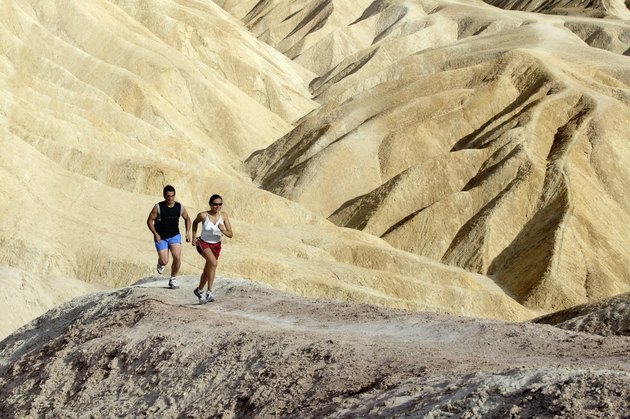As part of your weekly exercise, squatting helps keep your quadriceps, hamstrings and glutes strong. Single leg squats promote better balance, coordination and speed in running and other sports. Single leg squat can exercise most of the main muscle groups of the lower body and enhance the core strength.
 single leg squat can exercise the muscles used in running. (picture: Jupiter images / Stockbyte / Getty Images)
single leg squat can exercise the muscles used in running. (picture: Jupiter images / Stockbyte / Getty Images) meaning
single leg squat, also known as pistol, is a kind of weight exercise that helps to enhance strength and stability. Single leg squat has practical significance, because the range of motion involved in sports can best imitate the common muscle movements in sports and daily activities. Single leg squats allow your body to better adapt to intense performance, including running, jumping and the sudden twists and turns common in many sports. Squatting on two legs can lead to muscle imbalance between the two legs, because one leg is often in the lead, while squatting on one leg helps each leg develop and strengthen separately and equally. The comprehensive skills of one leg squat training help to improve flexibility, endurance and coordination.
H3> musclessingle leg squat works on the same primary muscle groups as running, including hip, hamstring, quadriceps femoris, gluteus maximus and calf. The hamstring is at the back of the thigh and the quadriceps is at the front of the thigh. Gluteus maximus muscles, also known as hip muscles, attach to your thighs. The lower leg consists of soleus and gastrocnemius muscles, which are located at the back of the leg. The support muscles used in the single leg squat include the upper and lower abdomen and biceps.
core support
single leg squat requires core support and posture adjustment. Because exercise relies on the balance of your abdomen and gluteus maximus, regular squatting on one leg can help you strengthen your legs and strengthen them. This means better movement and coordination in performance and other activities, especially when combined with other cross training exercises such as high bench walking and one leg jumping. As a part of the routine training, it can help you build better balance, coordination and body awareness. For example, a single leg squat can help you maintain a balance that is long enough without having to sit in a chair or grasp an object to support it. The single leg squat training is similar to the common rooting exercise in martial arts, that is, the way trees take root on the ground. When squatting on one leg, the body must find the center of gravity and connect with the ground to maintain balance on the basis of narrow support. The neuromuscular system is also challenged because of the integrated skills of balance, stretching and coordination during exercise.
